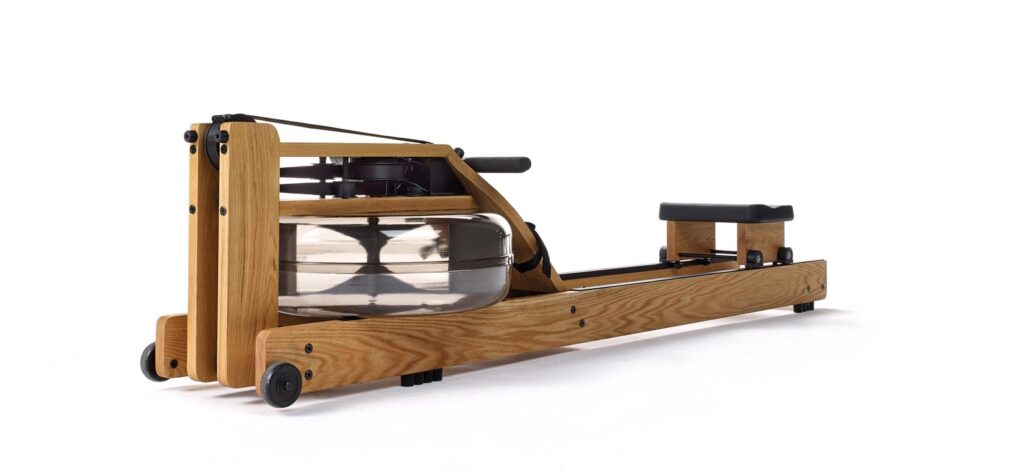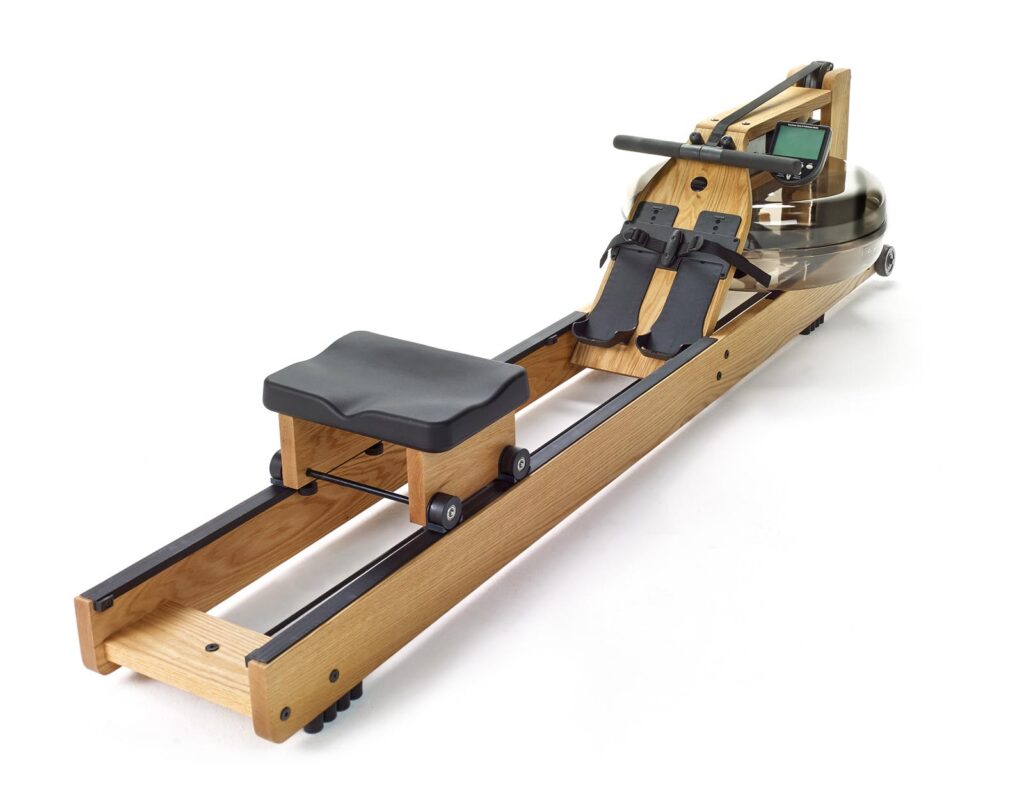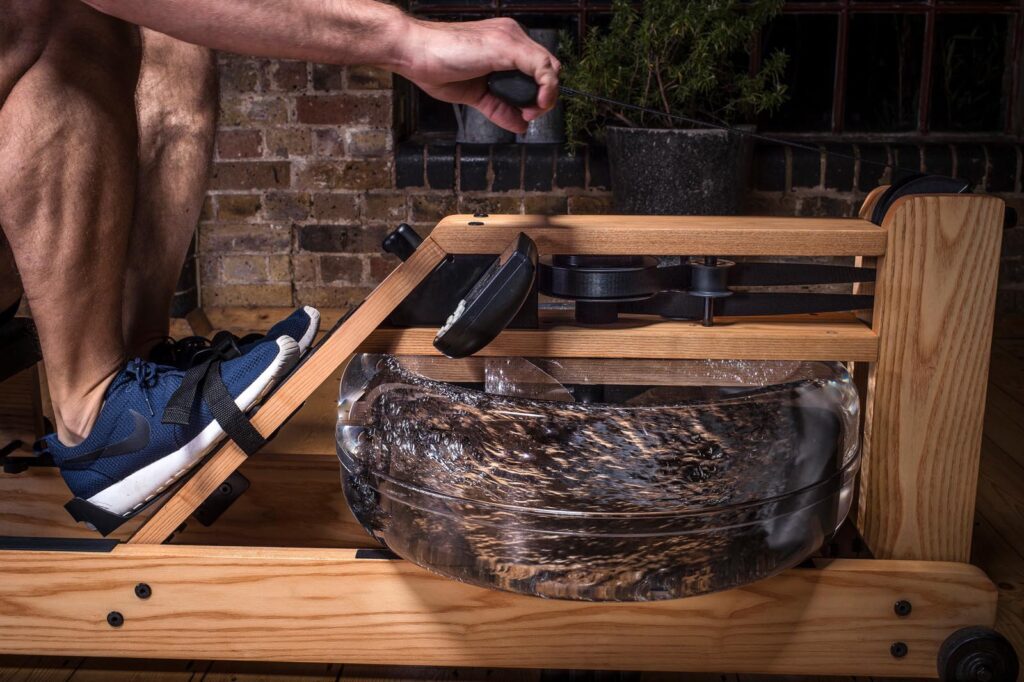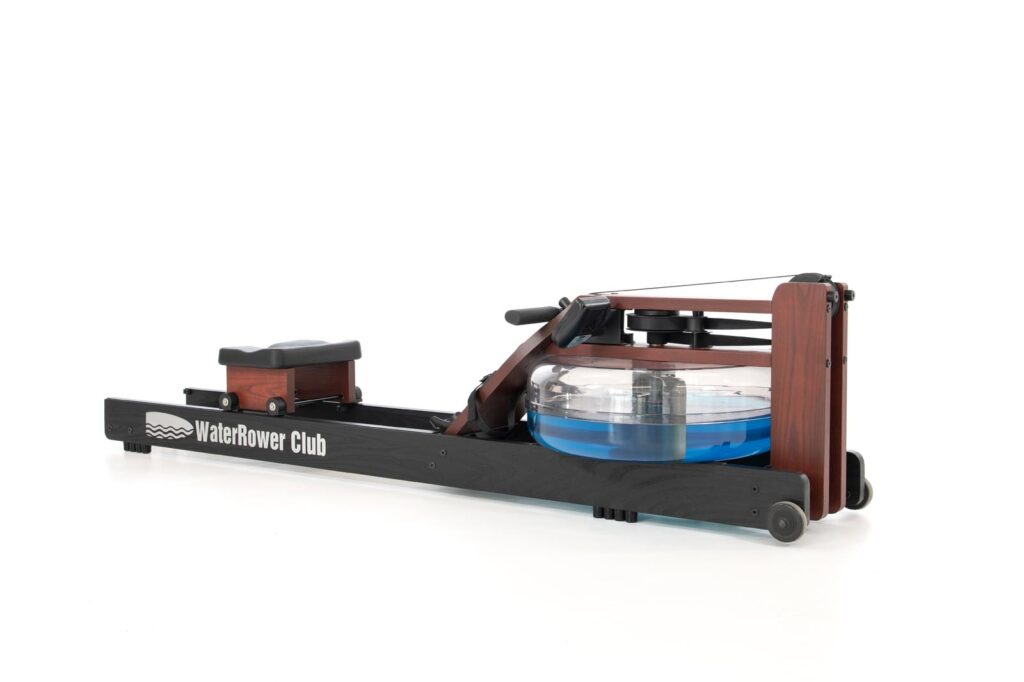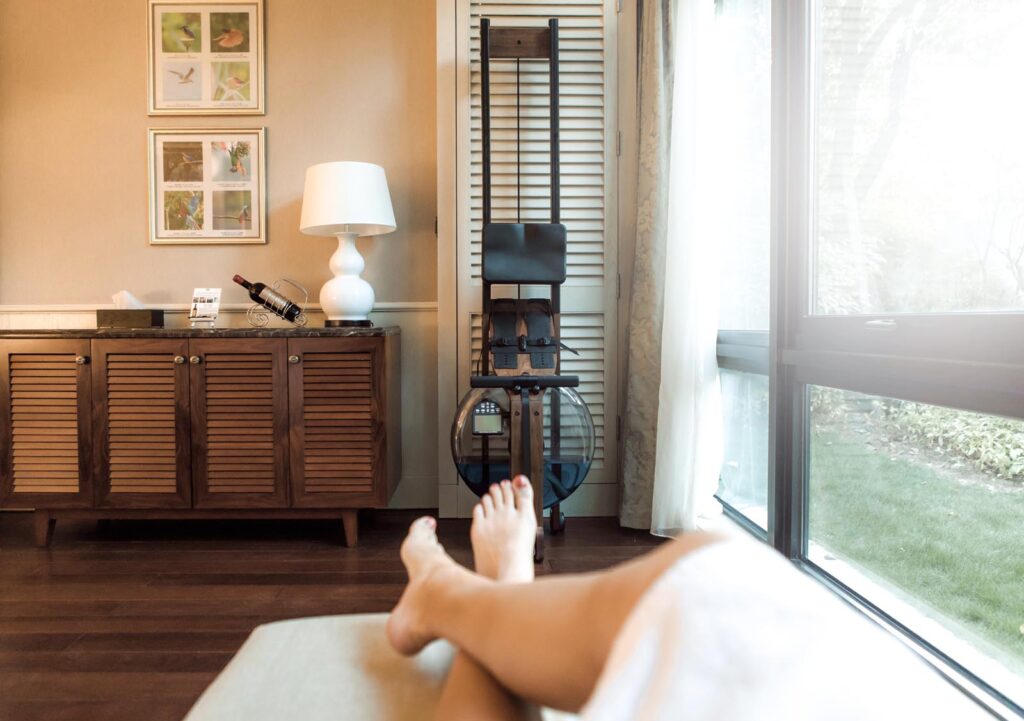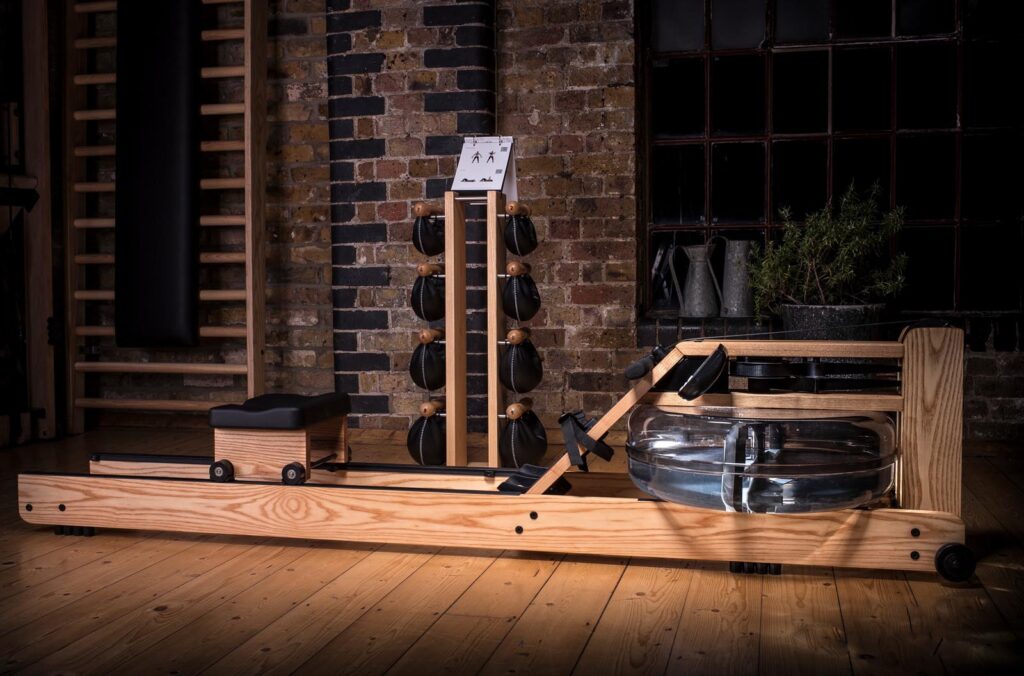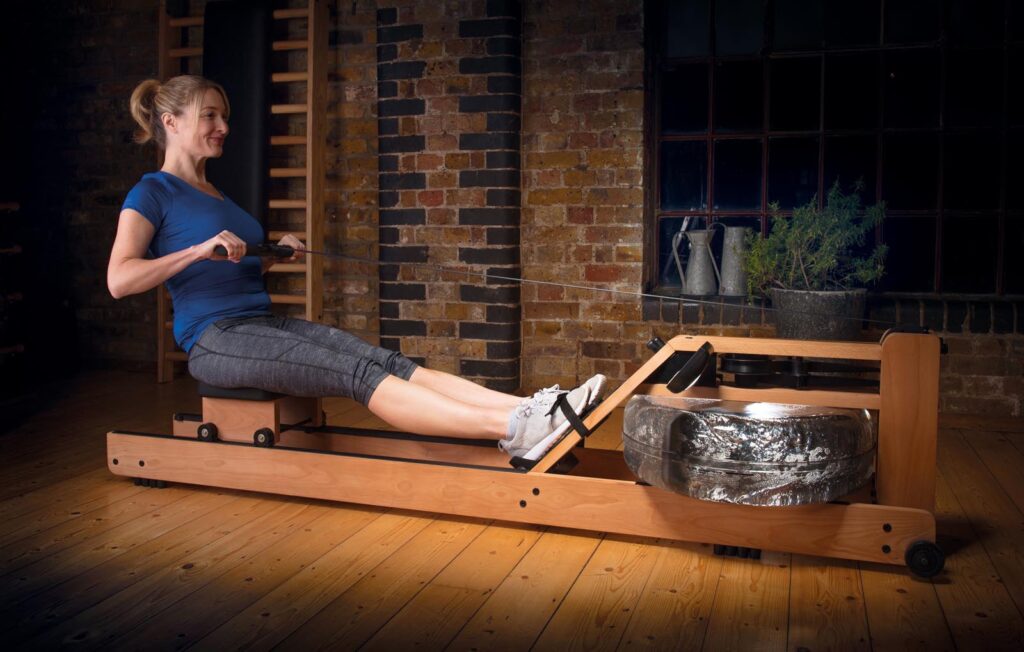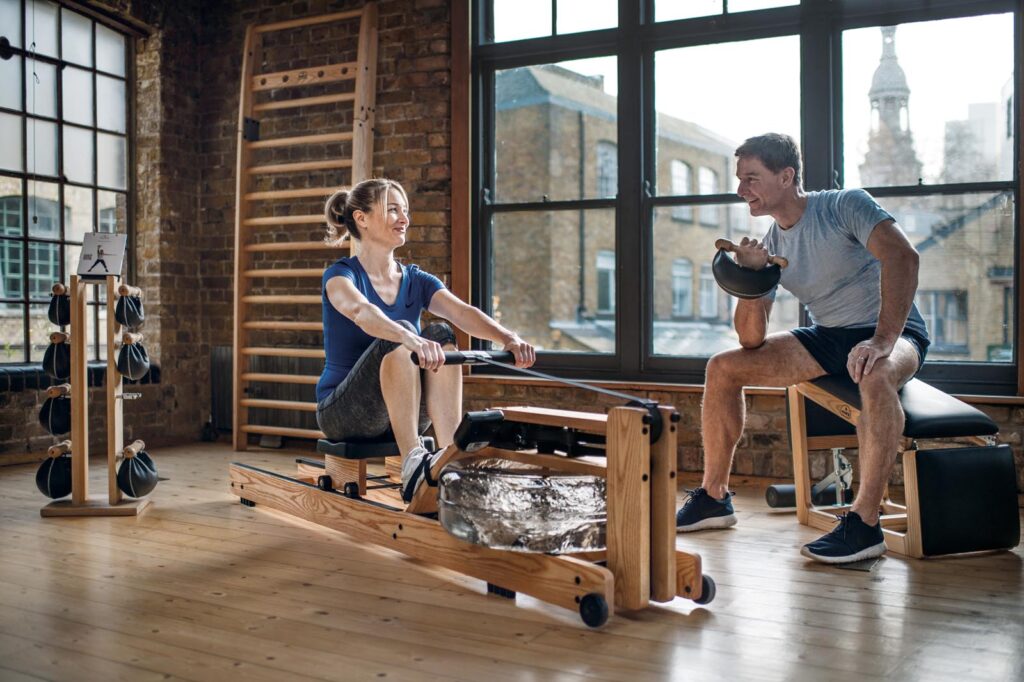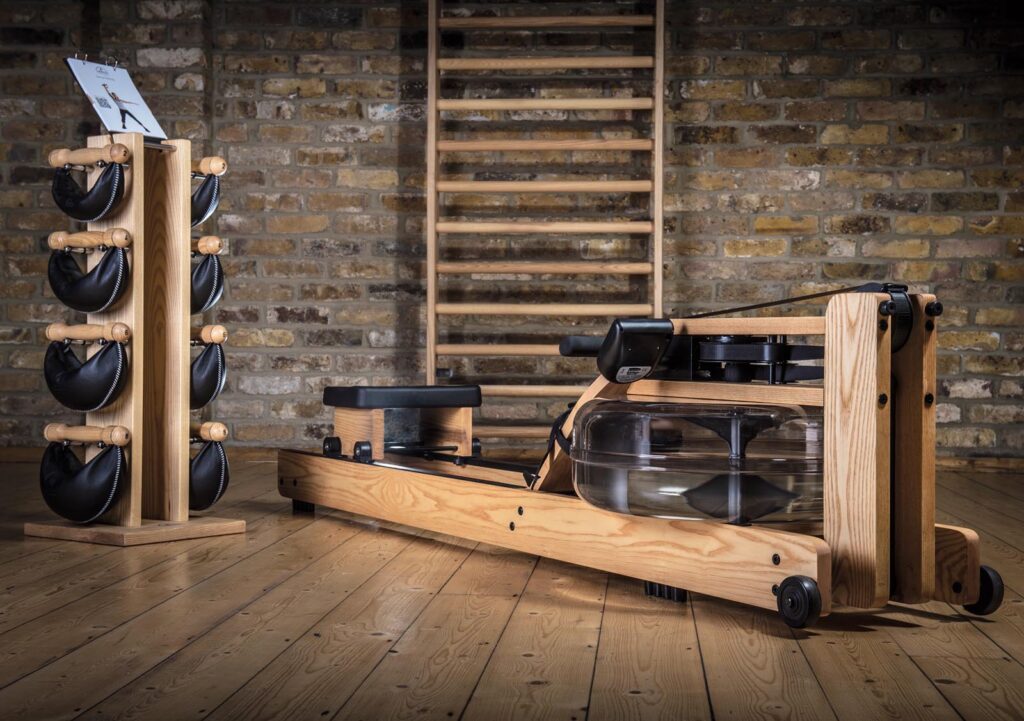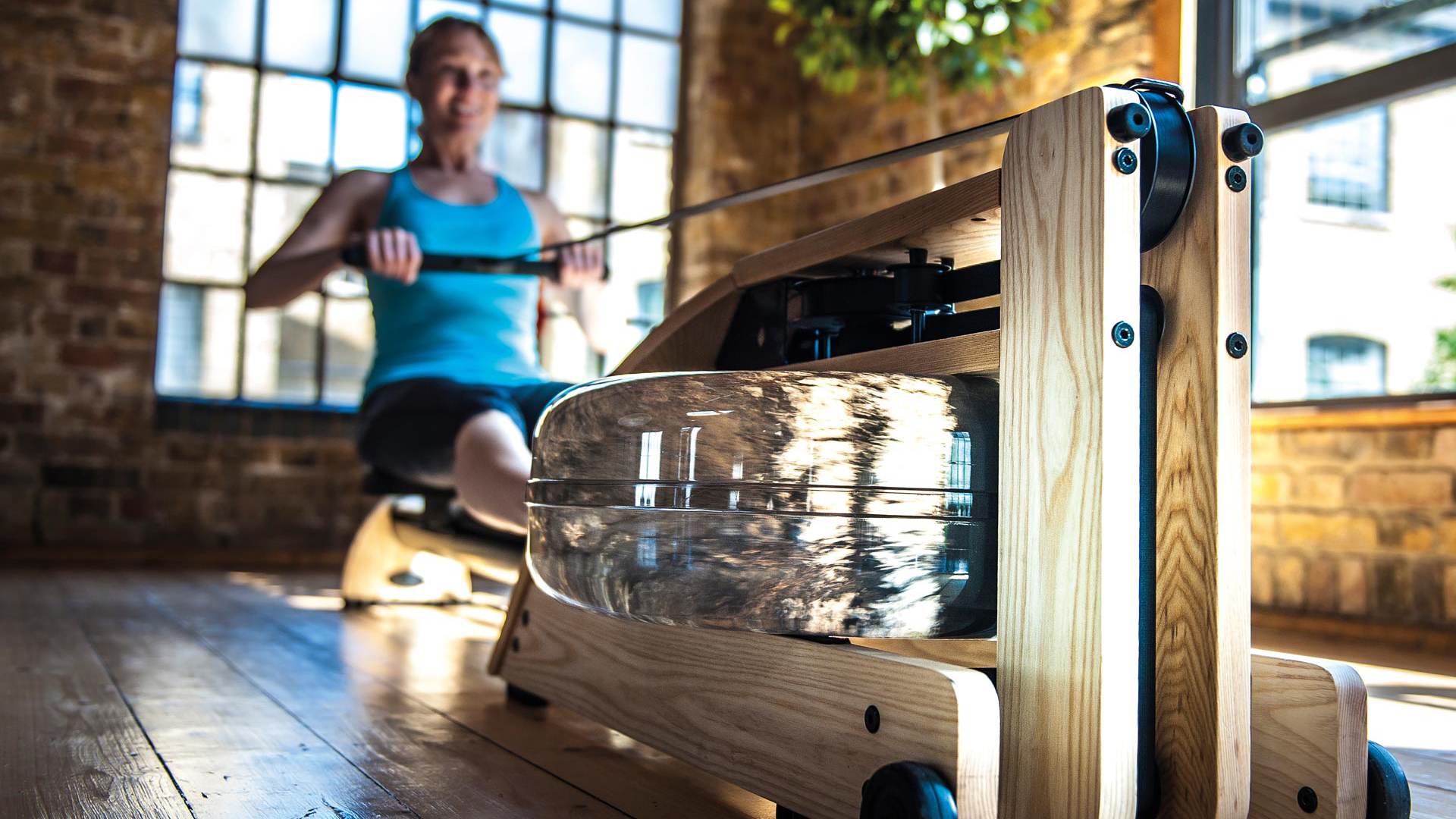There are products whose mere sight inevitably creates the desire to own them. Because they have a unique character. Because they have an inherent aesthetic that goes far beyond mere use. Because they anticipate the technical progress of their respective time due to their superior functionality. Design and technology legends that we would like to present here in loose succession. Like the WaterRower.
The idea of pulling on the oar even at home with the help of a rowing ergometer has been around since the end of the 19th century. From the 1950s onwards, machines with iron wheels and magnetic resistance were developed for the first time. At the beginning of the 1980s, they were replaced by rowing ergometers that worked with air resistance and for the first time had a movable seat mounted on a rail. What all the training equipment lacked, however, was the unique sensual sensation that only real rowing creates by pulling the sculls, the oar blades, through the water. Until John Duke showed up. The former Yale University rower and member of the U.S. national team developed his idea of a compelling rowing ergometer in 1988. With an ingenious as well as simple idea and an innovative design that started a cult, he designed the WaterRower – an indoor rowing machine that simulates as real as possible the real rowing on water. The WaterRower won the prestigious Plus X Award for its unique design and was the only piece of sports equipment to date to be displayed in London’s Design Museum.
How the noble ergometer works
The linchpin of this completely rethought rowing ergometer lies in a water tank in which an ergonomically shaped water paddle virtually rows along. The rower feels the paddle in the water via the cable pull and the water resistance authentically simulates rowing: This creates a soft and natural rowing feeling, an effect that is further enhanced by the soft rhythmic lapping of the water. By the way, the resistance does not have to be set manually, because it is determined solely by the force used during indoor rowing. Of course, the WaterRower has also long had a small monitor on board, which, connected to a PC and using free software, displays the data recorded during rowing.
The WaterRower is then as now the perfect combination of functional effectiveness and stylish design. It is characterized by the high quality of all individual components and first-class workmanship. The precision rod coupling, virtually the heart of the WaterRower, provides the typical soft resistance feeling when transmitting the power from the drawbar to the water wheel. The polyester drawstrings are woven without stretch and do not wear out. In general, all individual parts are extremely solidly manufactured and thus particularly resistant. The easy-care transparent water tank, for example, is made of the same robust material that aircraft windows are made of. The seat’s eight polyurethane ball-bearing casters run stably over the tracks without making a sound. For all those who would like to complement the noble fitness equipment with further devices right away: In addition to the distribution of WaterRower rowing machines, the German company NOHrD in Nordhorn manufactures fitness equipment with the utmost care and in loving craftsmanship from noble solid core woods such as ash, cherry or walnut as well as stainless steel.
